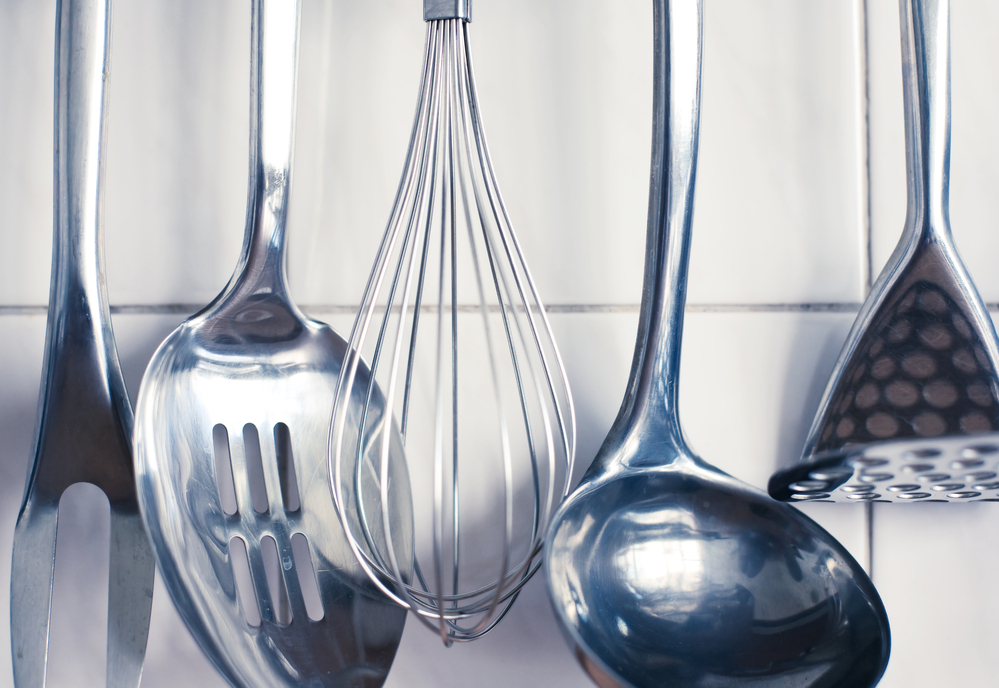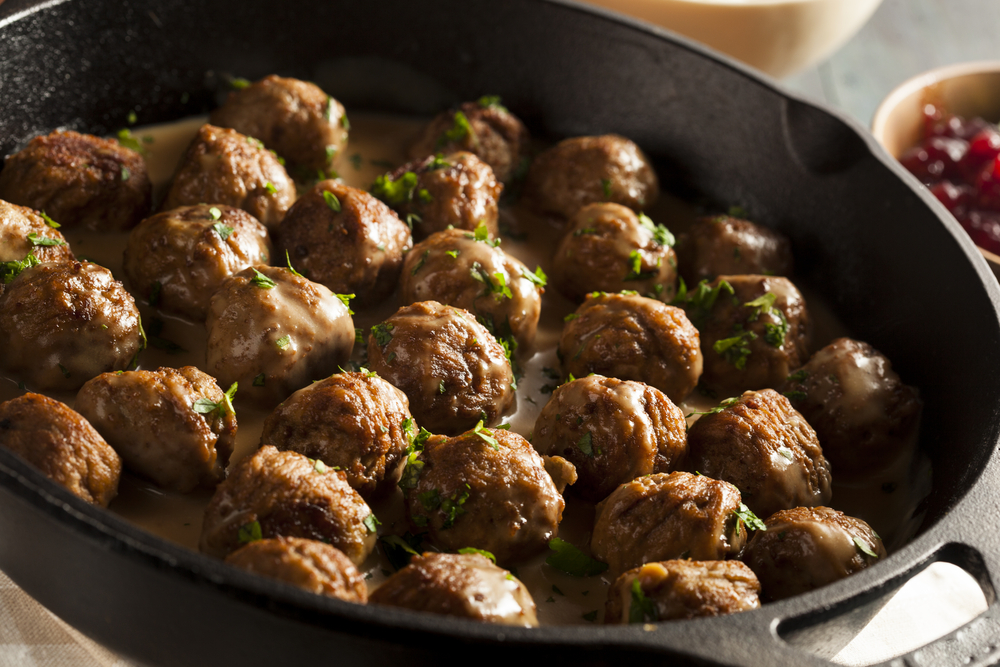When it comes to reheating soup, the microwave is a popular and convenient option. However, it can be tricky to know how long to reheat soup in the microwave to ensure that it is heated through without overcooking or creating a mess.
In this article, I will share some tips and guidelines for reheating soup in the microwave, so you can enjoy a comforting bowl of soup without any hassle.
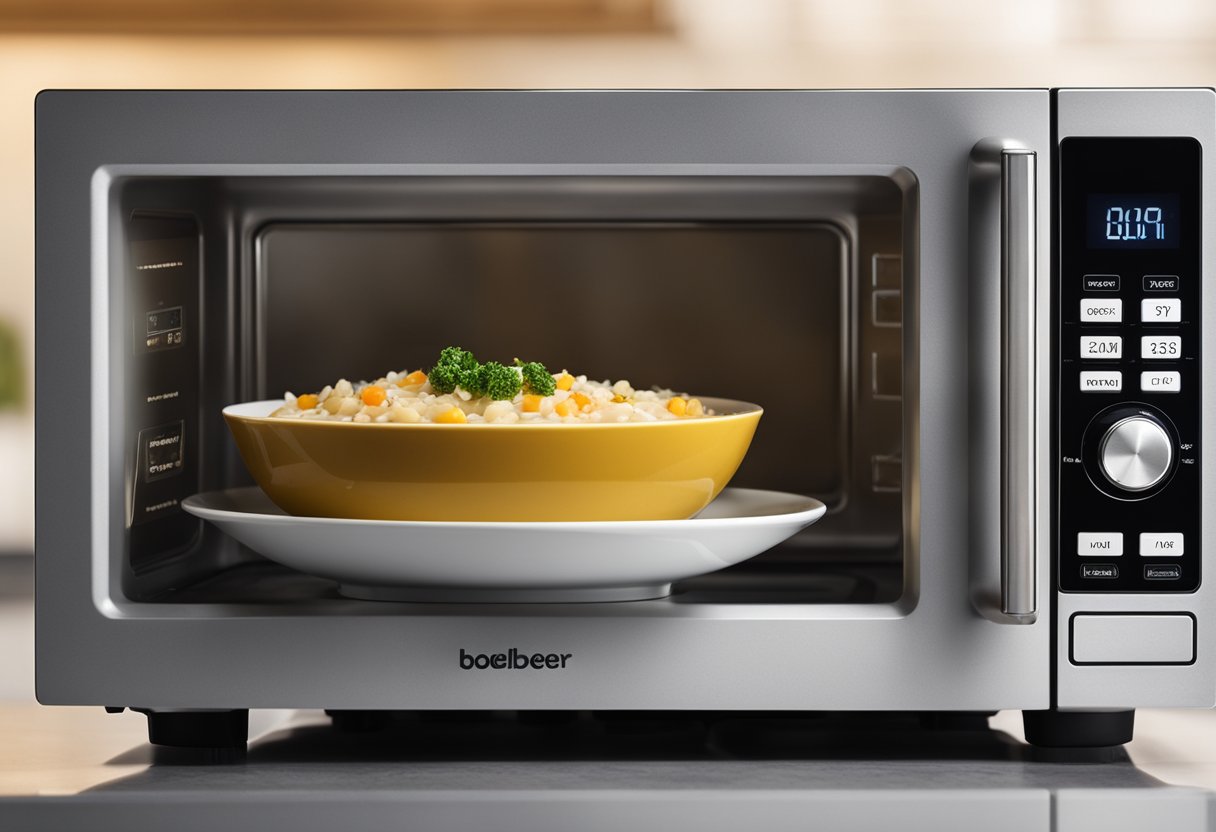
Before you start reheating your soup, there are a few things you should keep in mind. First, make sure your soup is stored in a microwave-safe container.
Glass and ceramic containers are good options, but avoid using containers with metal accents or plastic containers that are not labeled microwave-safe. Second, stir your soup before reheating to distribute any ingredients that may have settled.
Finally, cover your soup with a microwave-safe lid or plastic wrap to prevent splatters and ensure even heating.
Key Takeaways
- Reheating soup in the microwave is a convenient option for a quick and comforting meal.
- Use a microwave-safe container, stir the soup, and cover it with a lid or plastic wrap before reheating.
- The exact time to reheat soup in the microwave will depend on various factors, including the amount of soup and the microwave’s power output.
Preparing to Reheat Soup

When it comes to reheating soup, proper preparation is key to ensure that it is heated evenly and safely.
Here are a few things to keep in mind before you start reheating your soup:
Choosing the Right Container
When reheating soup in the microwave, it is important to choose a microwave-safe container. Glass and ceramic bowls are good choices, as are microwave-safe plastic containers.
Avoid using metal containers or bowls with metallic accents, as they can cause sparks in the microwave.
Additionally, make sure that the container you choose is large enough to hold the amount of soup you want to reheat. Overfilling a container can cause the soup to spill over and make a mess in your microwave.
Covering Techniques
Covering your soup while it reheats can help to prevent it from drying out and to ensure that it heats evenly. There are a few different covering techniques you can use:
- Plastic wrap: This can be a good option if you want to create a tight seal over your soup. Make sure to poke a few holes in the plastic wrap to allow steam to escape.
- Microwave-safe lid: If your container comes with a lid, use it to cover your soup while it reheats.
- Paper towel: Placing a damp paper towel over your soup can help to prevent it from drying out. Make sure that the paper towel is damp, but not soaking wet.
Overall, taking a few extra minutes to prepare your soup for reheating can help to ensure that it is heated evenly and safely. By choosing the right container and covering it properly, you can enjoy a delicious bowl of reheated soup in no time.
Microwave Reheating Basics
As someone who has reheated soup in the microwave many times, I have learned a few things about how to do it right.
Here are some basics to keep in mind:
Setting the Temperature
When reheating soup in the microwave, it is important to use the right temperature setting. If you set the microwave too high, the soup may boil over or heat unevenly. On the other hand, if you set it too low, the soup may take too long to heat up.
A good rule of thumb is to start by microwaving on medium power for 2-4 minutes, depending on the density of the soup. Dense soups like chowders or stews may require longer heating times, while broths or clear soups may heat up faster.
After the initial heating time, stir the soup gently to distribute the heat and check the temperature. Then, continue heating at 1-minute intervals until the desired temperature is reached.
Stirring for Even Heating
Another important factor to consider when reheating soup in the microwave is stirring. Stirring the soup occasionally while reheating it helps to ensure that it heats evenly and prevents any hot spots from forming.
To stir the soup, use a microwave-safe spoon or ladle and gently stir the soup from the bottom up. Be careful not to splash the soup or spill it out of the container. After stirring, check the temperature again and continue heating if necessary.
By following these basic tips for reheating soup in the microwave, you can enjoy a hot and delicious meal without any hassle.
Safety and Preservation
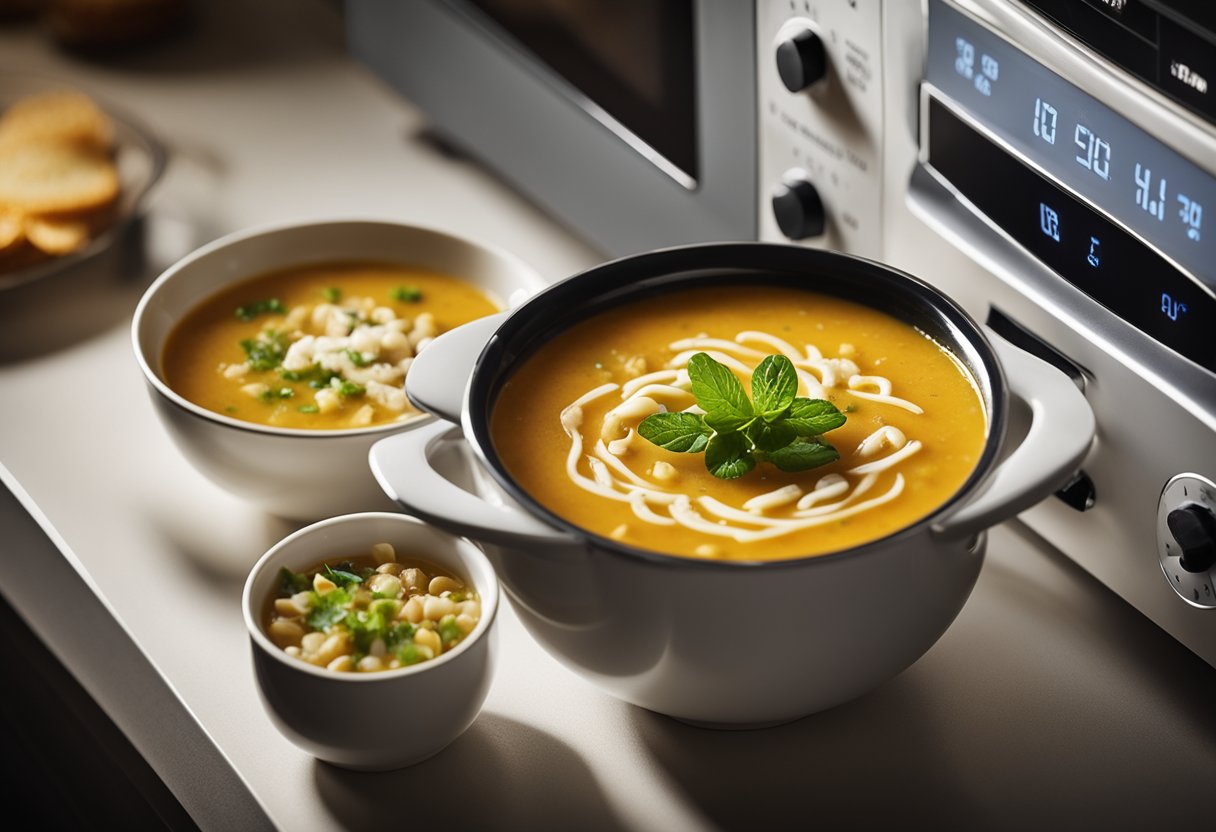
Avoiding Bacterial Growth
When reheating soup in the microwave, it’s important to take precautions to avoid bacterial growth. Bacteria can thrive in warm environments, so it’s important to ensure that the soup is heated to a safe temperature before consuming it.
According to the Food Safety and Inspection Service, leftover soup should be heated to an internal temperature of 165°F (74°C) before consuming.
To ensure that the soup is heated evenly, it’s important to stir it every 30 seconds while reheating it in the microwave.
This helps to distribute the heat evenly throughout the soup and reduce the risk of cold spots where bacteria can thrive.
Storing Leftover Soup
Proper storage is key to preserving the quality and safety of leftover soup. It’s important to store the soup in an airtight container and refrigerate it promptly after it has cooled down.
According to Martha Stewart, leftover soup can be stored in the refrigerator for up to 4 days. After that, it should be discarded to avoid the risk of foodborne illness.
When storing leftover soup, it’s important to label the container with the date it was made and the date it should be consumed by. This helps to ensure that the soup is consumed before it goes bad and reduces the risk of foodborne illness.
In summary, reheating soup in the microwave can be a quick and convenient way to enjoy leftovers. However, it’s important to take precautions to avoid bacterial growth and ensure that the soup is heated to a safe temperature before consuming it.
Proper storage is also key to preserving the quality and safety of leftover soup.
Alternative Reheating Methods
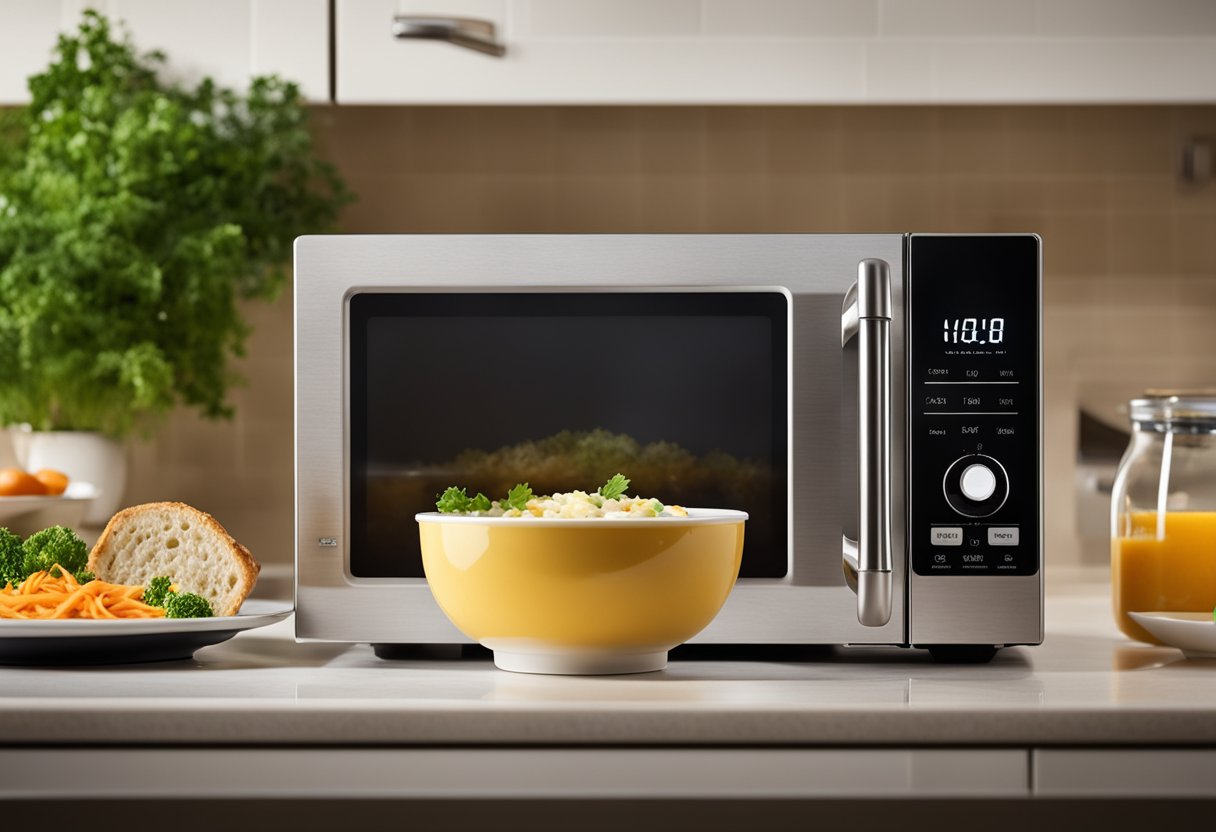
When it comes to reheating soup, the microwave is not the only option. In fact, there are several other cooking methods that can be used to reheat soup.
Stovetop Reheating
One of the best ways to reheat soup is on the stovetop. This method allows you to control the temperature of the soup and ensures that it is evenly reheated.
Simply pour the soup into a pot and heat it over medium heat until it reaches the desired temperature. Stir the soup occasionally to prevent it from sticking to the bottom of the pot.
Oven Warming
Another way to reheat soup is to warm it in the oven. This method is great for larger batches of soup and can be done in a baking dish or casserole dish.
Preheat the oven to 350 degrees Fahrenheit and place the soup in the dish. Cover the dish with foil and heat it in the oven for 20-30 minutes, or until the soup is heated through.
When reheating soup, it is important to use a cooking method that will not overcook or dry out the soup.
The stovetop and oven methods are both great options that allow you to control the temperature and ensure that the soup is evenly reheated.
Enhancing Soup After Reheating
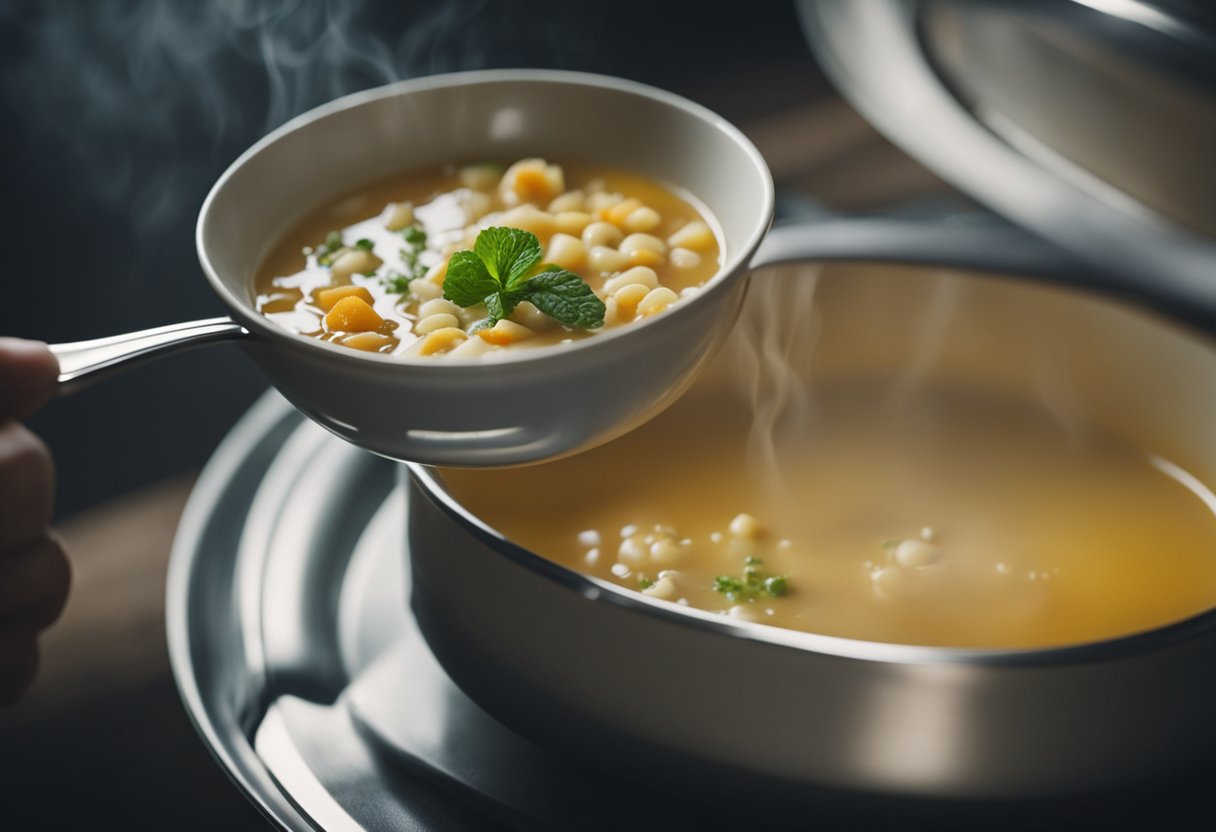
When reheating soup in the microwave, it’s important to keep in mind that the flavor and consistency may change slightly.
However, there are a few simple ways to enhance the soup after reheating to bring back some of the original flavors.
One way to enhance the flavor of reheated soup is to add fresh herbs or spices. For example, adding a handful of fresh parsley or a pinch of cumin can add a burst of flavor to the soup.
It’s best to add these herbs and spices after reheating the soup, as they can lose their flavor if cooked for too long.
Another way to enhance the flavor of reheated soup is to add a splash of acid. A squeeze of fresh lemon juice or a dash of vinegar can brighten up the flavors and add a bit of tanginess to the soup.
It’s important to add the acid slowly and taste the soup as you go, as too much acid can overpower the other flavors.
If the consistency of the reheated soup is too thick or chunky, adding a bit of broth or water can help thin it out. It’s best to add the liquid slowly and stir the soup well to ensure it’s evenly distributed.
Leftover homemade soup can be a great option for a quick and easy meal, but it’s important to handle it properly to ensure it stays safe to eat.
When reheating leftover soup, make sure it’s heated to an internal temperature of at least 165°F (74°C) to kill any bacteria that may have grown while it was stored.
Overall, reheating soup in the microwave is a quick and easy way to enjoy a warm meal. By following a few simple tips, you can enhance the flavor and consistency of your reheated soup and make it taste just as delicious as the day it was made.
Special Considerations
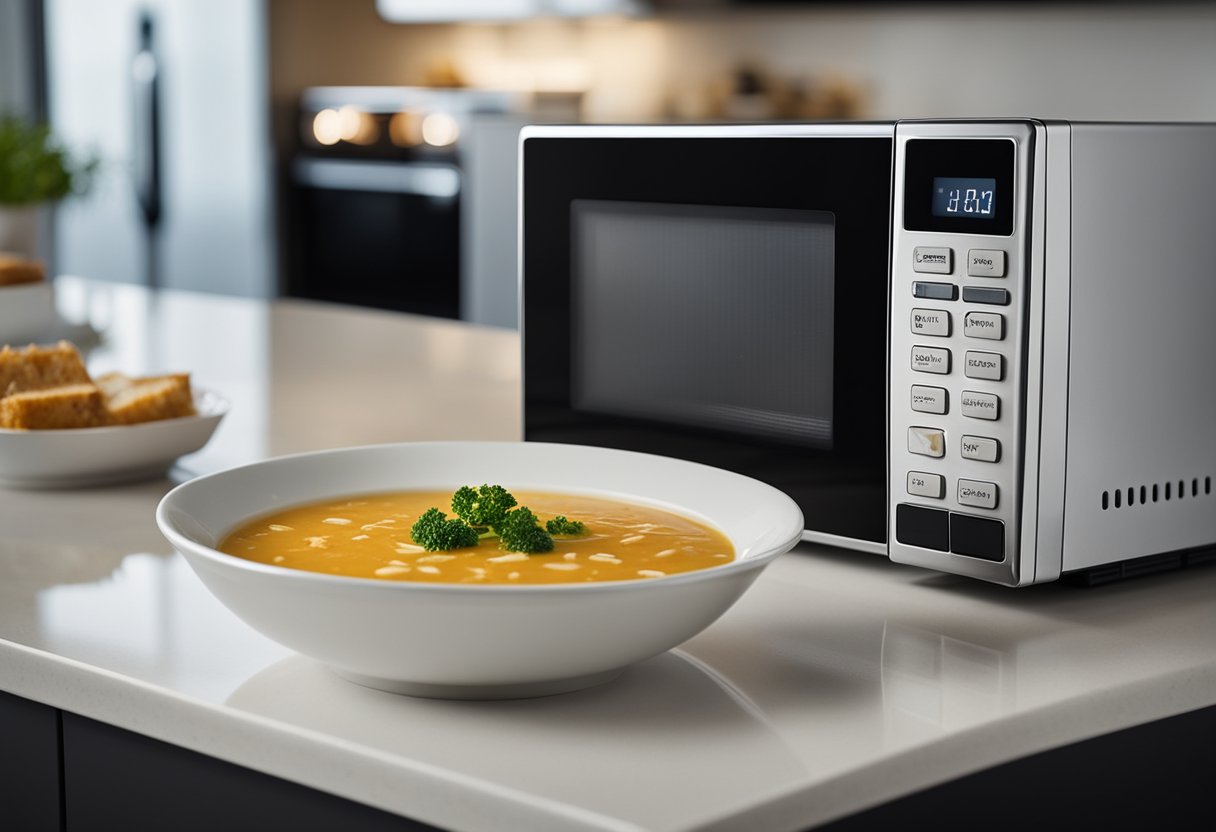
Reheating Frozen Soup
If you are reheating frozen soup in the microwave, it is important to defrost it first. You can defrost the soup by placing it in the refrigerator overnight or by using the defrost function on your microwave.
Once the soup is defrosted, you can follow the same reheating instructions as you would for fresh soup.
It is important to note that when reheating frozen soup, you may need to add extra liquid as the soup can become thicker during the freezing process.
Accompaniments and Pairings
Soup is a comforting and satisfying meal on its own, but it can also be paired with a variety of accompaniments to make it even more delicious.
A classic pairing with soup is grilled cheese. The warm, gooey sandwich is the perfect complement to a hot bowl of soup.
Another great accompaniment to soup is a fresh salad. A light, crisp salad can provide a nice contrast to the warm, hearty soup.
When serving soup to the whole family, it is important to consider everyone’s preferences and dietary restrictions.
You can offer a variety of soup options to accommodate different tastes, and provide toppings such as croutons, cheese, and sour cream for those who want to customize their soup.
Overall, reheating soup in the microwave is a quick and easy way to enjoy a comforting meal. By following the proper reheating instructions and considering accompaniments and pairings, you can elevate your soup experience and make it a satisfying meal for the whole family.
Frequently Asked Questions
What is the ideal time range for reheating soup in a microwave?
The ideal time range for reheating soup in a microwave varies depending on the type of soup and the quantity being reheated.
According to reheated.org, liquid soups should be microwaved on medium power for 2 minutes, while dense soups should be microwaved on medium power for 4 minutes.
After microwaving, stir the soup gently and continue heating at 1-2 minute intervals until the desired temperature is reached.
Should food be covered when reheating in a microwave to prevent drying?
Yes, covering food when reheating in a microwave can help prevent drying. According to livestrong.com, covering the soup with plastic wrap or a microwave-safe splatter cover can prevent splatter and encourage even heating.
Is it safe to reheat soup multiple times in a microwave?
Reheating soup multiple times in a microwave can be safe as long as the soup is heated to the appropriate temperature and stored properly.
However, spicybuffalo.com warns that repeatedly reheating soup can cause bacteria to grow, so it is important to reheat soup only once and consume it immediately.
How does the microwave reheat button adjust the cooking time for soup?
The microwave reheat button adjusts the cooking time for soup based on the quantity of soup being reheated.
According to homecookbasics.com, the reheat button uses sensors to detect the temperature and humidity of the food and adjust the cooking time accordingly.
What precautions should be taken when reheating meat soup in a microwave?
When reheating meat soup in a microwave, it is important to ensure that the soup is heated to an internal temperature of at least 165°F to kill any harmful bacteria.
According to reheated.org, meat soup should be microwaved on high power for 2-3 minutes, stirring every 30 seconds, until the desired temperature is reached.
How do you ensure even heating when reheating soup in a microwave?
To ensure even heating when reheating soup in a microwave, stir the soup gently every 30 seconds to distribute the heat evenly.
Additionally, homecookbasics.com suggests transferring the soup to a microwave-safe bowl and heating in 2-minute intervals, stirring in between, until hot.


